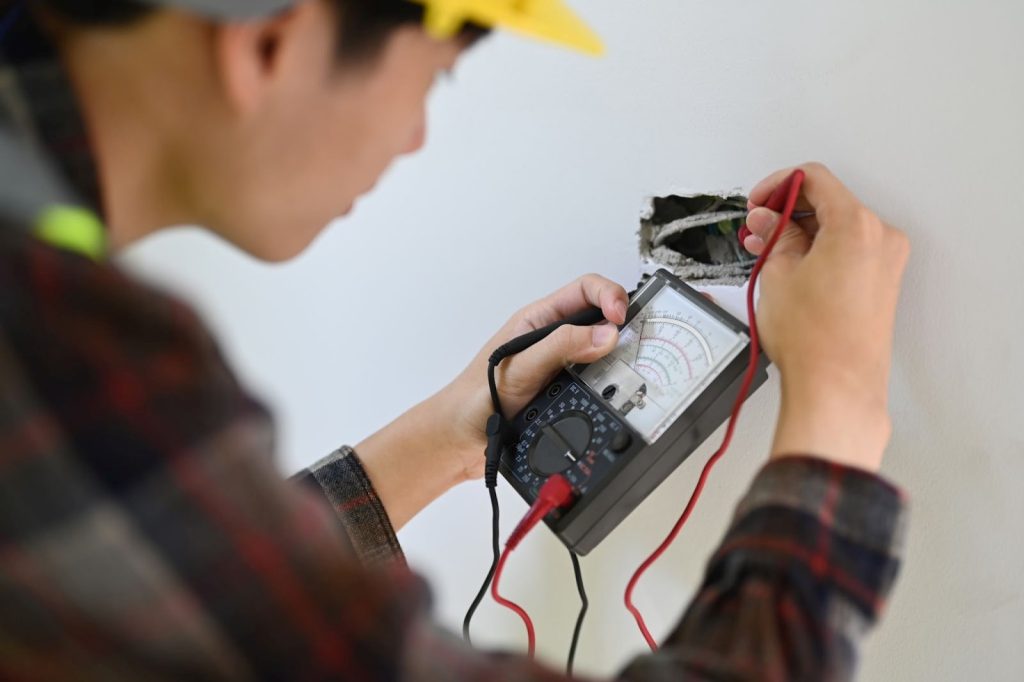Portable appliance testing is a critical part of workplace safety. But who is ultimately responsible for making sure that these tests are carried out regularly and effectively? With strict regulations in place requiring all electrical appliances to be tested periodically, employers must ensure that their staff has access to safe equipment at all times.
However, it’s not just employers who bear responsibility when it comes to PAT testing, other stakeholders such as landlords also play an important role in ensuring compliance with legislation and best practice guidelines. In addition to exploring the roles of different parties involved in PAT testing, this article provides advice on how each stakeholder can fulfill their responsibilities and offer guidance on what steps should be taken if any issues arise.
What Is PAT Testing?
Portable appliance testing (PAT) is a type of electrical safety check that involves visual inspection and risk assessment. It’s conducted on all types of moveable and stationary equipment with an electrical item inside, such as computers, kettles, and fridges. PAT testing is the responsibility of ‘duty holders’ – people in charge of premises or employers have a duty of care to ensure their electrical systems are safe.
During PAT testing, technicians inspect the equipment for any damage before running tests that measure insulation resistance and earth continuity. If there are signs of wear and tear, they’ll advise whether it needs repairing or replacing to protect users from harm. The results are recorded so duty holders can demonstrate they’ve taken steps to keep people safe.
Is PAT Testing A Legal Requirement In The Workplace?
PAT testing is not a legal requirement in all jurisdictions for workplaces. The legal requirements for electrical safety vary between countries and regions. In some jurisdictions, regulations may mandate periodic inspection and testing of electrical equipment to ensure safety, while in others, there may be no specific legal requirement for PAT testing.
For example, in the United Kingdom, the Health and Safety at Work Act requires employers to ensure the safety of electrical equipment in the workplace, but it does not specifically mandate PAT testing. However, the UK does have regulations and guidelines that recommend regular inspection and testing of portable electrical appliances in certain industries or for specific high-risk environments.
Similarly, other countries may have their own regulations and guidelines regarding electrical safety and testing of equipment in the workplace. It is important for employers and businesses to familiarize themselves with the specific regulations and requirements applicable to their jurisdiction and industry.
Even if PAT testing is not legally required, many organizations choose to conduct regular testing as a proactive measure to ensure the safety of their employees, customers, and visitors. It can help identify any potential electrical faults or hazards, mitigate the risk of accidents or electrical fires, and demonstrate a commitment to maintaining a safe working environment.
How Often Should PAT Testing Be Carried Out In Offices?
The frequency of PAT tests depends on a few different factors, such as the type and age of the piece of equipment, as well as its usage. Generally speaking, most pieces of electrical equipment will need to be tested every year by a competent person with good electrical knowledge. Visual checks can also help identify any minor issues before they become major problems, which should be done more regularly.
It’s important to note that while regular PAT testing may seem like an extra expense or hassle for businesses, it actually saves them money in the long run by avoiding costly repairs due to unexpected electrical faults. Therefore, it’s worth making sure you keep up-to-date with PAT testing for all your office’s electrical equipment.
What Are The Penalties If I Don’t Meet My Legal Obligations?
Here are some potential consequences for not meeting legal obligations regarding PAT testing:
- Fines and penalties: In many jurisdictions, non-compliance with electrical safety regulations, which may include the failure to conduct required PAT testing, can result in financial penalties. The fines can vary depending on the severity of the violation and the jurisdiction in question.
- Legal proceedings: Failure to meet legal obligations regarding PAT testing may result in legal action. This can involve formal complaints, investigations, and possible legal proceedings initiated by regulatory bodies, such as health and safety authorities or local government agencies.
- Business disruption: Non-compliance with PAT testing requirements can lead to business disruption. Authorities may issue enforcement notices or prohibition orders, which can restrict or prohibit the use of electrical equipment until it is deemed safe through proper testing and maintenance. This can result in operational downtime, financial losses, and reputational damage.
- Increased risk and liability: Neglecting PAT testing obligations can increase the risk of electrical accidents, equipment failures, and potential harm to employees, customers, or visitors. In the event of an accident or injury due to non-compliance, legal liability and compensation claims may arise, which can have significant financial and reputational consequences for the business or individuals responsible.
Who Is Responsible For Electrical Appliance Safety?
The responsibility for electrical appliance safety typically falls on multiple parties, depending on the context and location. Here are the primary entities that typically have responsibilities related to electrical appliance safety:
Manufacturers
Manufacturers have a fundamental responsibility to design and produce electrical appliances that meet safety standards and regulations. They must ensure that their products undergo proper testing and certification before being placed on the market. Manufacturers are expected to provide clear instructions for safe use, maintenance, and disposal of their appliances.
Employers and Business Owners
In the workplace, employers and business owners have a legal duty of care to provide a safe working environment for their employees and others who may be affected by their operations. This includes ensuring the safety of electrical appliances used in the workplace. They are responsible for conducting risk assessments, implementing appropriate safety measures, and maintaining regular inspections and testing of electrical equipment, including PAT testing where applicable.
Employees and Users
Employees and users also have a responsibility to use electrical appliances safely and as instructed. This includes following operating procedures, reporting any faults or malfunctions, and not engaging in unsafe practices that could compromise electrical safety.
Inspectors and Regulatory Authorities
Government agencies and regulatory bodies play a role in enforcing electrical safety regulations and standards. They may conduct inspections, audits, or investigations to ensure compliance with safety requirements. These entities have the authority to issue penalties, enforcement notices, or take legal action against non-compliant parties.
How Much Does PAT Testing My Appliances Cost?
Which Items Should Be PAT Tested?
While it is best to consult the regulations and guidelines specific to your location, here is a general list of items that are commonly subjected to Portable Appliance Testing (PAT):
- IT equipment: This includes items such as computers, laptops, printers, scanners, and other computer peripherals.
- Kitchen appliances: Electrical appliances used in kitchens, such as microwave ovens, refrigerators, toasters, kettles, and coffee machines, may need to be PAT tested.
- Office equipment: Items commonly found in office environments, including photocopiers, fax machines, telephones, and power strips, should be considered for PAT testing.
- Portable tools: Portable power tools, electric drills, saws, sanders, and other handheld tools used in construction, maintenance, or industrial settings should be tested
- Audio/Visual equipment: This category includes items like projectors, amplifiers, speakers, televisions, DVD players, and other audio/video equipment.
- Portable and handheld devices: Devices like hairdryers, electric shavers, electric fans, and portable heaters fall into this category and may require PAT testing.
- Extension leads and power cords: Electrical extension leads, power cords, and adaptors should be regularly inspected and tested for safety.
- Medical equipment: In healthcare settings, medical devices such as diagnostic equipment, patient monitors, electric beds, and defibrillators may require PAT testing.
Can I Do My Own PAT Testing?
Whether or not you can carry out your own PAT tests depends on your circumstances and level of expertise. Generally speaking, it’s not recommended for an individual to conduct their own portable appliance testing. Instead, administrators with responsibility should ensure there is a planned maintenance regime in place that includes regular inspections and tests.
However, technically, under the law, any competent person can complete a PAT test if they have a suitable amount of knowledge surrounding the equipment they are testing. Nevertheless, most appliances require specialist testing equipment and come with potential hazards during the testing process, which is why it is always best to get your electrical equipment tested by a professional.
PAT Testing Services
If you are a business owner or a landlord, the number one way to ensure your employees and tenants’ safety is by making sure all the electrical equipment in your building is safe to use. At Legionella Risk and PAT Testing, we understand how important electrical safety is, which is why our dedicated engineers will come to your property and execute thorough tests and provide you with a comprehensive report to prove your compliance.
Our tests involve:
- Inspection of plugs and wiring;
- Cable inspections and connection tests;
- Identifying continuity and testing it;
- Lead polarity checks;
- Insulation resistance tests.


